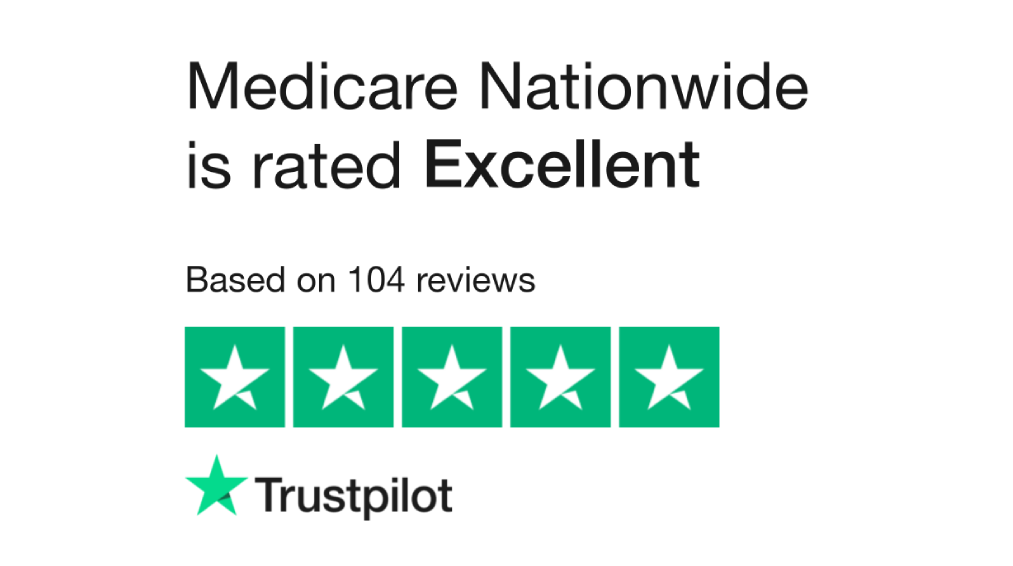
The Basics of Medicare Supplements
There are a variety of Medicare Supplement plans that offer different benefits for varying costs. These plans include A, B, C, D, F, G, K, L, M, and N. Changes to some of the plans in the last few years may affect your decision.
- Plan A. This is the most basic plan out of the Medicare selection, but also the cheapest. Recipients of Plan A will receive Medicare Part A coinsurance for an additional year, Medicare Part B copayment, 3 pints of blood, Part A hospice coinsurance or copay, and Part B preventive care coinsurance.
- Plan B. Plan B has similar coverage to Plan A. Everything is the same except Plan B covers Medicare Part A deductible and Plan A does not.
- Plan C. This plan adds a few notable benefits, but there is one stipulation. The coverage includes everything Plan B includes, with the added benefits of Medicare Part B deductible, 80% of foreign travel emergency costs, and skilled nursing facility care. This Plan is only available to those who were eligible for Medicare before 2021. If you were not eligible at this time, C is not available.
- Plan D. Plan D is closer to Plan B than it is to Plan C. The Medicare Part B deductible is not covered in Plan D like it is in Plan C. In addition to what Plan B covers, Plan D includes 80% of foreign emergency costs and skilled nursing facility coinsurance.
- Plan F. For years, Plan F was the most popular plan among baby boomers and was also the most expensive. This plan provides the most coverage, offering everything Plan C does, including Medicare Part B excess charges. Plan F met the same fate as Plan C, meaning that if you became eligible for Medicare during 2021, this plan is no longer available for you.
- Plan G. Plan G is another popular plan that is recommended among insurance providers. It provides the same benefits as Plan F, except for the removal of Part B deductible coverage.
- Plan K. Plan K is where things start to get a little complex. Plan K is most similar to Plan D, except for the Part B copay, 3 pints of blood, Part A hospice, skilled nursing facility and Part A deductible, Plan K only covers 50% of those costs. Plan K also does not cover any foreign emergency costs and has an out of pocket limit that can change yearly.
- Plan L. Plan L is the same as Plan K but covers 75% of costs instead of 50%. The out-of-pocket limit has also been lowered, but still changes yearly.
- Plan M. Plan M provides full coverage for the benefits in Plans K and L, but the Medicare Part A deductible is only covered up to 50%. There is no out-of-pocket limit for this plan and Plan M will also cover up to 80% of foreign travel emergency costs.
- Plan N. Finally, the real star of this chart. Plan N offers the same coverage as Plan M except it offers full coverage for all benefits. This plan is heavily recommended by providers because of its coverage and great cost, which we will get into.
From this chart, you can probably surmise that Plan F provides the most coverage and will probably be the most expensive. The problem with Plan F is that it is no longer available to new Medicare recipients as of Jan. 1, 2021. If you were eligible for Medicare before this date, Plan F is still available to you.
The plan with the most coverage is Plan G, which is heavily promoted by insurance providers. It offers well-rounded coverage for a lower price than Plan F. The price can depend on your provider, so it is best to ask for a quote before jumping on a plan.
Plan N is also heavily recommended by providers. It has a lower cost than Plan G and covers much of the same benefits. If you do not want to pay the cost of Plan G but want similar coverage, Plan N is another great option.
This appointment is meant to alleviate any concerns and there is no-cost or obligation to make a change.
How Do You Choose the Best Coverage for Yourself?
How to find the Most Affordable Plan?
1. Start with Coverage
You know yourself better than anyone else, and your needs are important.
If you are new to Medicare, having your old medical policy is handy. What coverages did you like? What’s a non-negotiable? Is there anything about your previous insurance that frustrated you?
Take stock of your medical needs. Over the past five years, what has been your annual medical costs? Have you had surgery? What kind of prescriptions do you take? Do you have any pre-existing conditions that you are currently managing? What’s your family health history and current state of your own health?
A thorough assessment of your needs will empower you to make better decisions as you review Medicare Supplement plans. Coverages are different and broad, and you can get lost in the weeds. Having ideal targets in mind when you start the process will prime you to find what is right for you.
Taking a close look at the coverage of each Medicare Supplemental plan and cross-referencing it with what you need is a great way to narrow down your options.
If you are a visual person, it’s helpful to have a simple chart that breaks down each plan. We created a chart just for this purpose. Having everything on one page can help you get a handle on what you need. Click here to take a look at the chart.
As you look through each option, you may realize you need more or less coverage. Not everyone needs the biggest supplemental plan with the most coverage.
A good guide to plans is to remember Plan G offers the most comprehensive coverage for the best price, and Plan A is the most restrictive. Other plans offer a mix of options.
Don’t forget the deductibles and co-pays. Increasing out-o-pocket spending can save in premium dollars. If your average medical expenses are low, this could be an easy way to put more money in your pocket.
2. Look at Price
Price is important. You want to get the most coverage you need while still choosing the most affordable Medicare Supplement plan.
Many factors affect price, including your age, gender and coverage. But what most people don’t realize is that where you live can have the biggest impact.
States regulate insurance, and most states hold a tight rein on the pricing and coverage available. The general health of the area you live can also influence how much you pay.
In many cases, the policies with more coverage may be cheaper or even comparable to lower-coverage policies. Don’t skimp on coverage just to save a penny. It may cost you in the long run with out-of-pocket expenses.
Let’s look at monthly premiums for Plan G across various states, so you see the impact of geography on pricing. These prices are based on a male turning 65.
Tennessee – $109
Texas – $135
Florida – $185
California – $145
New York – $280
3. Consider the Company
One positive note about supplement plans: All coverages are the same regardless of the company. The federal government regulates the coverages nationally and coverages are standardized. This eliminates some of the decision-making process in choosing plans.
Coverages may be identical, but pricing is different as well as additional benefits they offer. Outside of pricing and benefits there are 4 major points you should look at.
These four factors will help determine if you want to purchase a Medigap policy from a particular company:
Financial Ratings
If companies are not financially stable, they may not pay your claims. They will be slow to act and cut costs with customer service. A struggling company will be difficult to work with.
Financial rating companies examine insurance companies for stability. Pay attention to these companies and their rating scale and it will help you make good decisions.
Every review the professionals at Medicare Nationwide create of Medicare supplement companies will include this data to help you determine the best carriers. We use this data to determine which companies to partner with so we can offer the best to our customers.
Moody’s, AM Best and Comdex are the standards for insurance quality ratings. The top Moody’s rating is Aaa. AM Best is A++. Comdex combines the scores of many rating agencies. It rates on a scale of 1-100. An elite company will score between 85-100.
Longevity
Health Insurance is a relatively new product in the insurance world. Many health companies grew from within life companies. Company longevity is a great indicator whether the company will be around when you need them.
Company Size
Size is an indicator of financial strength and stability. Be wary of small companies or startup health companies. They may be an impressive company but it is a red flag, and you should ask more questions.
Customer Feedback
Most state departments of insurance store customer complaints on insurance companies. Double-check with your state for complaints. If the company has a higher-than-average number of complaints, this could be a great indicator of whether they are difficult at claim time.
The other rating organization to consider is J.D. Power. You are probably familiar with its car ratings, but it also rates insurance companies. The company doesn’t have to get the best grade, but they need to be at the top.
Find Great Advice
Because of the multiple coverage options offered by multiple companies, it helps to get expert advice when making your selections. A good agent has years of experience in the industry and understands the mistakes people have made in the past. They know details about companies that can often be difficult to find through internet research. They have relationships with underwriters and can help with claims and customer service issues.
So how do you identify a quality agent with your best interests at heart?
Look for agents that represent more than one company. This can be dangerous because if the agent only has one or few carriers to offer, he may pigeonhole you into what is best for his compensation and not best for your wallet and health.
Look for agents committed to the industry over the long term with staff equally experienced. Find agents that are committed to their industry with industry certifications. Certifications require hours of study and commitment to ethical standards that will protect you as a consumer.
Whatever you do, don’t go it alone. Having a good agent with multiple carriers is worth just the time they spend quoting your needs with multiple carriers to find the best pricing and fit.
This appointment is meant to alleviate any concerns and there is no-cost or obligation to make a change.
We Can Help You Find What You Need
So what’s the most affordable Medicare Supplement plan? The plan that fits your needs and wallet. Medicare Nationwide can help you find the best most comprehensive policy at an incredible. We contract with multiple carriers through the US and can present a package of options that makes decisions easy and affordable.
Prefer to chat by phone? Give us a call at 1-888-559-0103.

